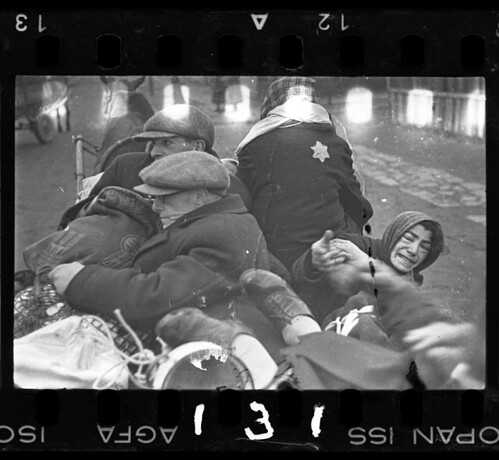Monday, 12:00pm
8 June 2015
Ghosts of the ghetto
Photographer Henryk Ross risked his life to bear witness to the Holocaust. By Sarah Snaith

The Art Gallery of Ontario is showing a selection of salvaged photographs taken by Jewish photographer Henryk Ross in the Łódź Ghetto in Poland during the Second World War. ‘Memory Unearthed’ offers a rare glimpse into Jewish life during this horrific period in history, showing both everyday life and human suffering, writes Sarah Snaith.
Ross (1910-1991), a former photojournalist for the Polish press, was assigned to the Jewish council’s statistics department in the ghetto, where his job was to take benign images that promoted the ‘efficiency’ of Jewish workers under the Nazi regime in Poland, and photos for work permit identification cards.
Henryk Ross, Łódź ghetto: Men hauling cart for bread distribution, 1942. Gelatin silver print.
Top: Henryk Ross, Łódź ghetto: Man walking in winter in the ruins of the synagogue on Wolborska street (destroyed by Germans 1939) 1940. Silver gelatin on cellulose nitrate: negative series.
All photographs: Gift from Archive of Modern Conflict, 2007 © Art Gallery of Ontario.

Henryk Ross, Łódź ghetto: Henryk Ross photographing for identification cards, Jewish Administration, Department of Statistics, 1940.

But he also used his camera for more clandestine activities. By shooting several ID portraits simultaneously on one negative, he saved film stock that he could use to secretly record the fate of his compatriots. He posed as a cleaner in Radogoszcz station to photograph the mass deportation of residents being corralled into cattle carts en route to Chelmno nad Nerem and Auschwitz-Birkenau.
Henryk Ross, Łódź ghetto: Boy walking in front of the bridge crossing Zigerska (the ‘Aryan’ ) street, 1940-44. Gelatin silver print.

Installation image of Henryk Ross’s contact sheets taken by the author.
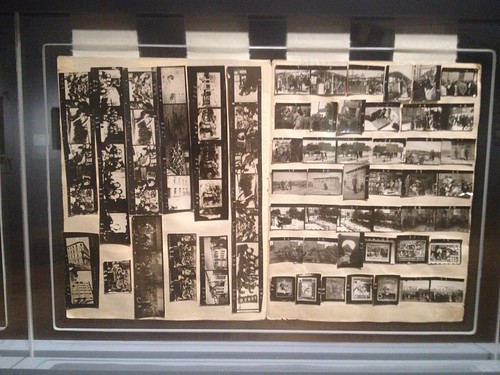
Ross devised ingenious ways to conserve film, and buried 6000 cellulose nitrate negatives and photographs in jars within an iron-rimmed box in the ghetto preceding its 1944 liquidation. He and his wife Stefania were two of just 875 residents (of more than 160,000 residents initially imprisoned) left behind to clean the ghetto following the mass deportations of the ‘Final Solution’. On 15 January 1945, they were liberated by the Russian Red Army.
When the photographs were unearthed, half of them were severely damaged; groundwater had dissolved the gelatin layer of the film. However the surviving images helped to support Ross’s testimony at the 1961 trial of war criminal Adolf Eichmann, who was sentenced to death and executed the following year.
Installation image of ‘Memory Unearthed’ taken by the author.
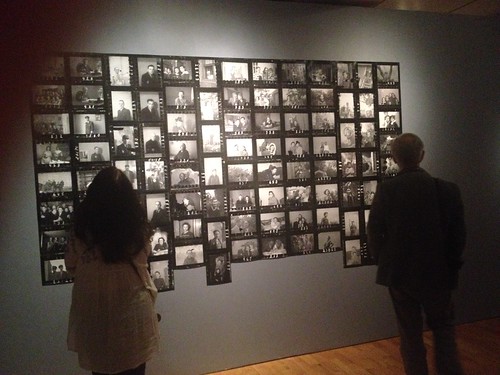
The full collection of 3000 surviving images was donated to the Art Gallery of Ontario (AGO) in 2007. This extensive exhibition makes use of Ross’s own words: ‘Having an official camera, I was able to capture all the tragic period in the Łódź Ghetto. I did it knowing that if I were caught my family and I could be tortured and killed.’ Some water damage remains visible on many of the selected images on display, but the AGO chose not to remove the signs of their degradation, stating: ‘The ghostly photographs become objects imbued with the history that made them’.
Henryk Ross, Łódź ghetto: Holzwollefabrik workshop (workers hauling wood shavings for mattress fill), 1942. Modern print from original 35mm negative.
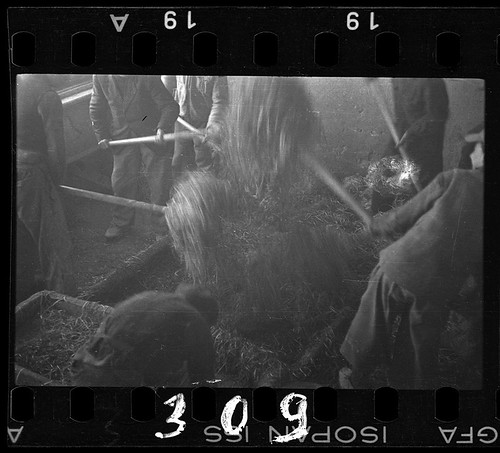
‘Memory Unearthed’ continues until 14 June 2015 at the Art Gallery of Ontario, 317 Dundas Street West, Toronto, Canada.
The book Memory Unearthed: The Łódź Ghetto Photographs of Henryk Ross was published by Yale University Press in March 2015.
Henryk Ross, Łódź ghetto sign for Jewish residential area (‘Jews. Entry Forbidden’), 1940-44. Gelatin silver print.
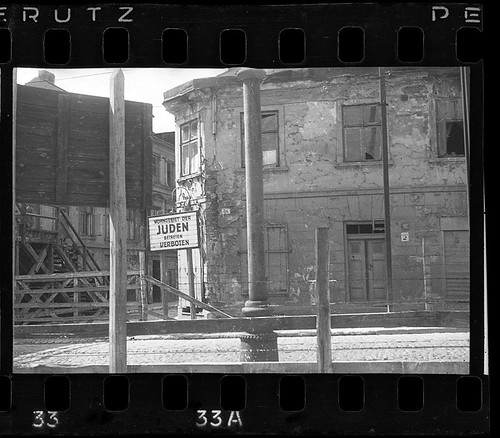
Sarah Snaith, design writer, editor, London
Eye is the world’s most beautiful and collectable graphic design journal, published quarterly for professional designers, students and anyone interested in critical, informed writing about graphic design and visual culture. It is available from all good design bookshops and online at the Eye shop, where you can buy subscriptions and single issues.

